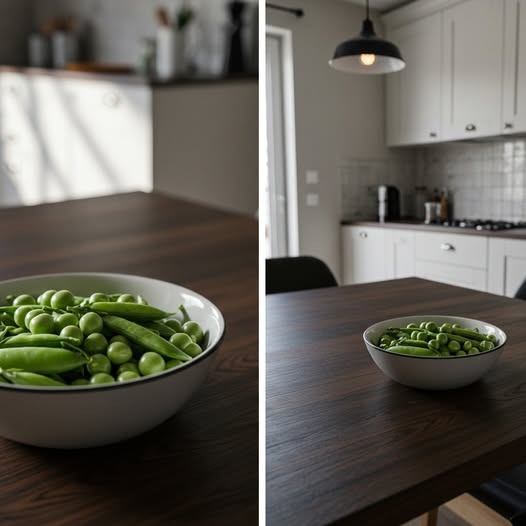ADVERTISEMENT
Peas are a hardy and resilient crop, highly resistant to cold temperatures and even frost. This makes them one of the earliest crops that can be sown outdoors, either in a garden or in a field. Typically, pea sowing begins in late February or during March, depending on the prevailing weather conditions. Under normal circumstances, pea seeds take about 10 to 14 days to germinate. However, there are methods to speed up this process significantly. Additionally, taking precautions to disinfect and protect the seeds from various diseases and pests is crucial to ensuring a healthy and bountiful harvest. Preventive measures play a key role in avoiding problems later in the growing season.
Seed Disinfection Method
One of the most effective ways to disinfect pea seeds and protect them from fungal diseases and pests is by using a simple, natural solution made with garlic. Garlic has well-known antifungal, antibacterial, and insect-repelling properties, making it an excellent choice for organic seed treatment. This method is not widely known among amateur gardeners, yet it provides significant benefits.
Steps for Seed Disinfection:
Prepare the Garlic Solution
In 300 ml of lukewarm water, add one tablespoon of dry garlic powder (or crushed fresh garlic).
Mix well to ensure the garlic compounds infuse into the water.
Soak the Pea Seeds
Place the pea seeds in a separate container.
Pour the prepared garlic solution over the seeds, ensuring they are fully submerged.
Let them soak for approximately 30 minutes.
Rinse the Seeds
After soaking, remove the seeds from the solution and rinse them thoroughly with clean water.
This step helps remove excess garlic residue while maintaining its protective properties.
Speeding Up Germination
Once the seeds are disinfected, the next step is to accelerate their germination. This is particularly useful when planting early in the season, as it allows for faster plant establishment and better yield potential.
The Ziplock Bag Method
This technique is simple yet highly effective, ensuring that pea seeds germinate within just a few days.
Prepare the Germination Environment
Take a clean paper towel and moisten it with chamomile tea.
Chamomile tea has natural antifungal properties that prevent mold growth while promoting seed germination.
Place the Seeds
Lay the disinfected pea seeds evenly on the moistened paper towel.
Fold the paper towel gently to cover the seeds.
Use a Ziplock Bag
Transfer the paper towel with the seeds into a ziplock bag.
Seal the bag to create a humid environment, which accelerates germination.
Contrary to common belief, sealing the bag does not deprive the seeds of air. The oxygen trapped inside is sufficient for the germination process.
Storage and Monitoring
Place the bag in a warm area (preferably around 20-25°C or 68-77°F).
Check the moisture level daily. If the paper towel begins to dry out, lightly spray it with more chamomile tea.
Avoid over-wetting the towel, as excess water can cause the seeds to rot instead of germinating.
Labeling the Seeds
If working with multiple types of seeds, label the bag with the name of the variety to keep track of different batches.
Transplanting the Germinated Seeds
After just a few days, the pea seeds will begin to sprout. At this stage, they are ready for planting in the garden or field.
Select a Suitable Planting Location
Peas prefer well-draining soil that is rich in organic matter.
Choose a location that receives ample sunlight for optimal growth.
Prepare the Soil
Loosen the soil and mix in compost or well-rotted manure for added nutrients.
Avoid nitrogen-rich fertilizers, as peas fix their own nitrogen from the atmosphere.
Plant the Germinated Seeds
Make shallow rows about 2-3 cm deep.
Place each germinated seed carefully into the row, spacing them approximately 5 cm apart.
Cover the seeds with soil and water gently.
Continued on next page (page 2)
ADVERTISEMENT
ADVERTISEMENT
